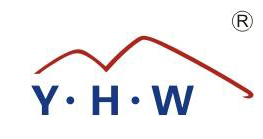Composite insulated aluminium roof tiles represent a significant advancement in roofing technology, combining the lightweight durability of aluminium with the thermal insulation properties of composite materials. These tiles are engineered to provide superior performance in terms of energy efficiency, weather resistance, and longevity. The key material properties and manufacturing processes involved in their production are critical to understanding their effectiveness and application in modern construction.
The primary material used in these tiles is aluminium, chosen for its excellent strength-to-weight ratio, corrosion resistance, and malleability. Aluminium is inherently lightweight, which reduces the structural load on buildings, making it an ideal choice for roofing applications. However, pure aluminium alone does not provide sufficient thermal insulation. To address this, composite materials are integrated into the design. These composites typically include a core of polyurethane (PU) or polystyrene (PS) foam, which offers high thermal resistance (R-value) and contributes to the overall energy efficiency of the roofing system.
The manufacturing process of composite insulated aluminium roof tiles begins with the production of the aluminium sheets. These sheets are often coated with a protective layer, such as a fluoropolymer or polyester finish, to enhance their resistance to UV radiation, weathering, and chemical corrosion. The coating process involves cleaning the aluminium surface to remove any impurities, followed by the application of the protective layer through techniques like roll coating or spray coating. This ensures a uniform and durable finish that can withstand harsh environmental conditions.

Next, the aluminium sheets are formed into the desired tile shapes using precision stamping or roll-forming machines. This step requires careful control of the forming parameters to ensure that the tiles have consistent dimensions and structural integrity. The formed tiles are then prepared for the integration of the composite insulation layer. The insulation material, typically in the form of rigid foam boards, is cut to match the dimensions of the aluminium tiles. Advanced bonding techniques, such as adhesive lamination or thermal fusion, are used to securely attach the insulation to the aluminium substrate. This bonding process must be meticulously controlled to avoid voids or gaps that could compromise the thermal performance of the tiles.
In addition to the core insulation layer, some composite insulated aluminium roof tiles incorporate additional features to enhance their performance. For example, reflective coatings or films may be applied to the outer surface of the tiles to further reduce solar heat gain. These coatings are designed to reflect a significant portion of the sun's infrared radiation, helping to keep the building cooler and reducing the load on air conditioning systems. Similarly, vapor barriers or moisture-resistant layers may be integrated into the tile design to prevent condensation and moisture infiltration, which can lead to mold growth and structural damage.
The final step in the manufacturing process is quality control and testing. Each batch of composite insulated aluminium roof tiles undergoes rigorous testing to ensure that they meet industry standards for thermal performance, fire resistance, wind uplift resistance, and impact resistance. These tests may include thermal conductivity measurements, fire rating assessments, and simulated weathering tests to evaluate the tiles' durability under various environmental conditions.




 English
English русский
русский Español
Español عربى
عربى















